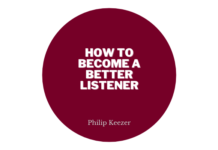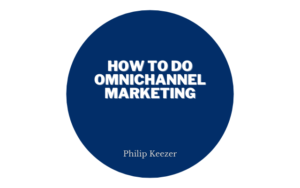Whenever you adapt your marketing strategy to a modern buyer, you need to consider the behaviour of your ideal customer.
So what’s the modern buyer like? When it comes to digital behaviour, I’d posit most people spend a lot of time on different platforms. Whether they’re checking their Twitter feed, posting a story on Instagram, or catching up on messages, the human of the 21st century is always connected.
Enter omnichannel marketing. Omnichannel marketing means using every platform at your disposal to connect with potential customers and convince them to buy. However, once you dive into the details, it can become a bit complicated, so let’s talk about omnichannel marketing as clearly as possible.
What Is Omnichannel Marketing?
If you google Omnichannel marketing you’ll find a ton of definitions. Here’s the one I think covers this principle best, from learn.g2.com:
“Omnichannel marketing is a strategy that puts the customer experience first. Across the customer journey, all touch points, from awareness through to purchase, are seamless. An omnichannel approach takes multichannel marketing to the next level, integrating channels to work together, not in silos.”
So omnichannel marketing means rounding up all of your channels, then developing a communication strategy that integrates them all. Again, not as silos. That’s the important part. With omnichannel marketing you’re not just present on all platforms, you’re actually diversifying the content shared through all of them to fit a customer’s journey.
A popular example of omnichannel marketing is retargeting people who have abandoned products in your cart. Here’s how that works:
A user ends up on your site. He’s met by the marketing on your site, which can include copy, articles, product descriptions, or calls to action through pop-ups. They end up adding products to cart, but they never finalize their order. Then, using the Facebook pixel, you display ads to them while they’re browsing Facebook, acknowledging your previous interaction, and serving content based on that.
For example, you could showcase the products they abandoned in a cart with an image slider. The specifics will, of course, differ from business to business, but the principle stays the same. You create a journey for your customers, using the technology that each platform has to offer.
So how is this different from multichannel marketing?
Omnichannel vs Multichannel Marketing
Multichannel marketing is a good stepping stone to an omnichannel strategy, but there are clear differences between them.
Omnichannel marketing means developing an integrated experience with all the channels at your disposal. It’s about creating a journey.
Multichannel marketing means simply being present on the channels where your audience spends their time. It’s about being present, not interacting.
So let’s talk about that previous example. Omnichannel marketing means crafting an experience for users that abandoned a product. By contrast, in multichannel marketing you’d simply have a store, and a Facebook page, that both share similar content. Again, multichannel marketing is important, because it’s the first step to having a fully-fleshed omnichannel strategy, but it’s not enough.
Imagine what a user feels when they get a retargeted ad, compared to just finding your store on Facebook as well. Omnichannel marketing feels like more of an actual conversation, rather than the classic business-customer relationship.
It’s a valuable tool to have in your marketing arsenal, so let’s talk about implementing an omnichannel strategy.
How To Do Omnichannel Marketing
The first step in developing an omnichannel strategy is to get everyone on board. Whether you work with a few freelancers, or have a fully-fleshed marketing team in-house, everyone needs to understand the principle of omnichannel marketing. Once they do, you should all work together to devise the strategy, considering the platforms you have at your disposal, and how they can interact with each other.
But there’s another benefit to getting everyone involved. More hands on board means you’re pooling expertise together, which will in turn lead to more ideas about creating a valuable journey for your customers.
Because that’s the next step. Once everyone is working together towards an omnichannel marketing strategy, you need to understand your ideal customer’s journey(s).
Google Analytics and insights from social media platforms will come in handy here. The purpose of this stage is to outline how potential customers come in contact with your brand, what content from you they’ll see next, and what steps they take until (and even after) they buy. This can be as simple as a funnel in Google Analytics, or as complex as a mock-up featuring 20 entry points for customers, and the different pieces of content they’ll interact with along the way.
If you want to have access to the most insights possible, you could also ask for feedback from your existing customers, to see how they interacted with your brand.
Moreover, here’s why interdepartmental collaboration is important for an omnichannel marketing strategy. For a true understanding of your customer’s journey, you’ll need both insights about your followers on instagram, as well as common complaints your support team sees.
But once you’ve managed to understand a customer’s journey, it’s time to work on your targeting.
Here’s what that can include:
- The actual targeting of Facebook or Google ads.
- The ideal customer that interacts with your brand on each individual channel.
- The interest stage your audience is in according to where they’re at in the buyer’s journey.
- The content people on different platforms best respond to, according to their situation.
And based on this targeting, you can then create content and conversation.
However, that’s not all of it. Omnichannel marketing is reactive in nature, because it relies on assessing where a specific customer is, and responding based on that. That’s why your team should be ready to adapt to any new scenario, according to the targeting you’ve outlined. Moreover, that’s why an omnichannel strategy should be tested and optimized based on real-life responses to it. But do this, and in time you’ll be proud of your omnichannel marketing.
In Conclusion
Omnichannel marketing is about having a conversation with your audience, not just throwing pieces of content at random on your channels. It’s tougher to execute than a multichannel strategy, but the payoff is huge if you follow the steps I outlined above.














